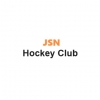Anterior cruciate ligament (ACL) and Medial collateral ligament (MCL) - Onjury, Treatment and Recovery time

Anterior cruciate ligament (ACL) and Medial collateral ligament (MCL) - Onjury, Treatment and Recovery time
The anterior cruciate ligament (ACL) and medial collateral ligament (MCL) are critical components of the knee joint, playing distinct roles in maintaining stability and mobility. This article aims to elucidate the anatomical features, causes, diagnostic grading, and healing protocols associated with ACL and MCL injuries, serving as a comprehensive guide for medical practitioners.
The Anatomy of the ACL and MCL:
The ACL, located at the knee's centre, connects the femur to the tibia. Its primary function is to prevent the shinbone from sliding forward, thus safeguarding against knee instability and buckling. Conversely, the MCL is situated on the knee's inner aspect, limiting excessive inward bending while enabling a controlled degree of knee rotation. These ligaments are essential for knee stability and function.
ACL Injury Mechanisms:
ACL injuries typically result from abrupt deceleration or changes in direction, such as pivoting in basketball, sidestepping in football, or rapid dribbling in soccer. A torn ACL is often accompanied by an audible pop, an inability to bear weight on the affected knee, and noticeable swelling.
MCL Injury Mechanisms:
In contrast, MCL injuries are commonly encountered in contact sports, such as hockey, football, rugby, or wrestling. The MCL can sustain damage when the knee is subjected to a direct impact from the outside, causing excessive inward bending and resultant strain or tear. Symptoms may include a sensation of knee-catching, along with pain and swelling.
Diagnostic Grading of ACL and MCL Injuries:
Both ACL and MCL injuries are categorized into three grades. A grade one injury represents a ligament sprain, indicating that the ligament is stretched but not torn. These injuries are typically manageable with rest, ice, elevation, and an immobilizing brace. Grade two injuries involve partial ligament tears, resulting in knee looseness, pain, and swelling. Grade three injuries are the most severe, representing complete ACL or MCL tears, leading to knee instability and severe pain, often necessitating surgical intervention.
Healing Protocols for ACL and MCL Injuries:
Recovery approaches differ between ACL and MCL injuries. Due to the robust blood supply to the exterior of the knee, conservative management is often recommended for MCL injuries. Patients may require rest and an immobilizing brace to initiate the healing process, followed by physical therapy to restore knee stability once initial pain and swelling subside. Surgical intervention, if necessary, is minimally invasive, typically requiring only a small incision. Grade one MCL injuries may heal within one month, while grade two or three injuries may necessitate two to three months for recovery.
ACL injuries may also be treated conservatively for grade one tears, involving the use of an immobilizing brace, rest, and physical therapy. Grade two and three ACL tears may require surgical reconstruction, followed by a brace and further physical therapy to regain the knee's range of motion. Recovery periods for grade one ACL injuries are estimated at four to six weeks, whereas grade two or three injuries may demand six to nine months of recovery. Athletes with grade two and three ACL injuries should refrain from returning to their regular activities until they are medically cleared to do so.
Conclusion:
Understanding the distinct characteristics, injury mechanisms, diagnostic grading, and treatment protocols for ACL and MCL injuries is vital for medical professionals in effectively managing and aiding the recovery of patients with knee ligament injuries. Such comprehensive knowledge enables precise diagnosis and targeted care, ensuring optimal outcomes and a return to normal activities.
This article has been published on Kaplon Athletic. Please note that per copyright law, reproduction or copying of any content from this website without permission is prohibited.

 Staff
Staff



